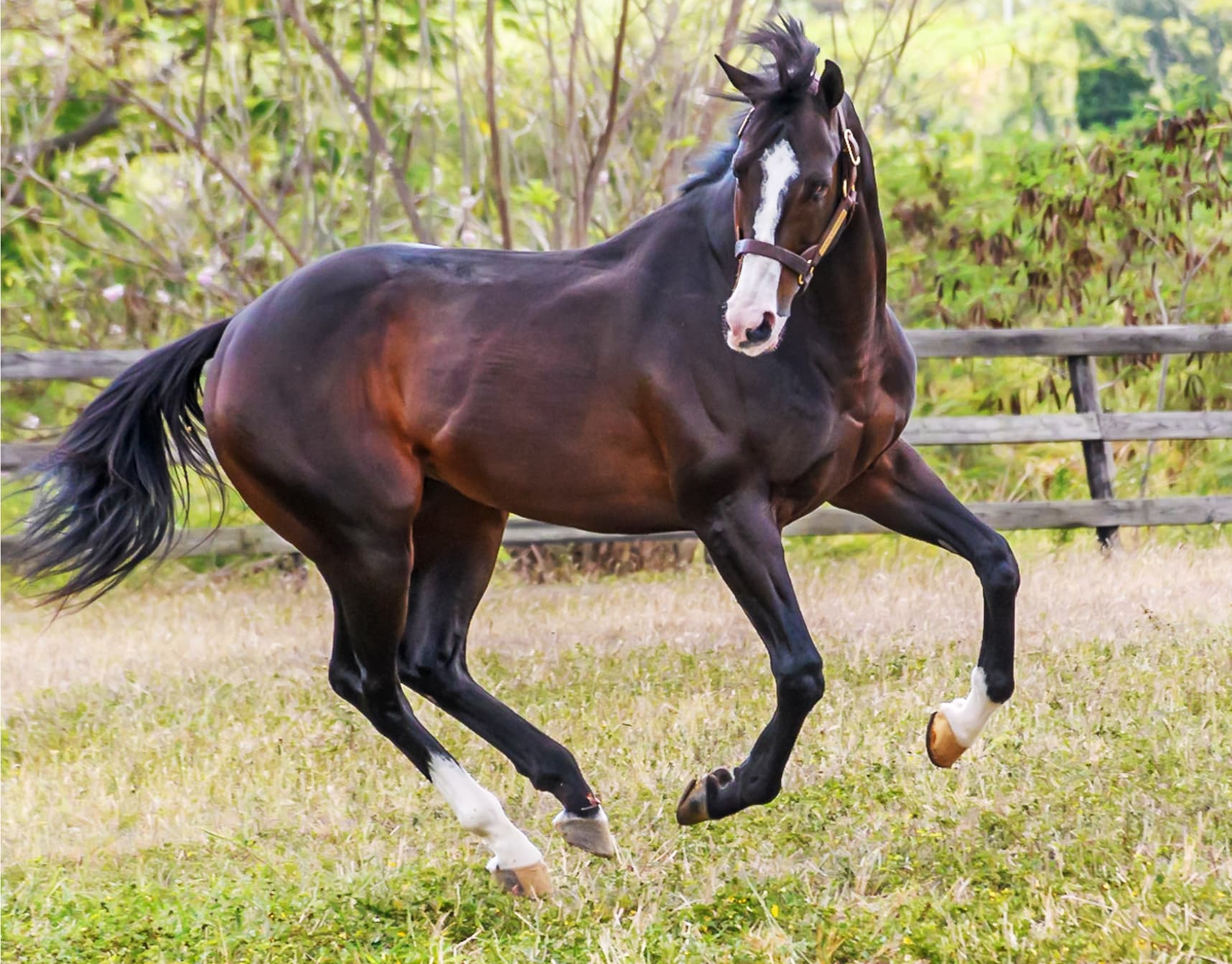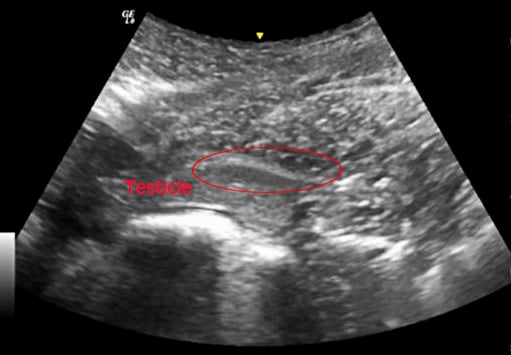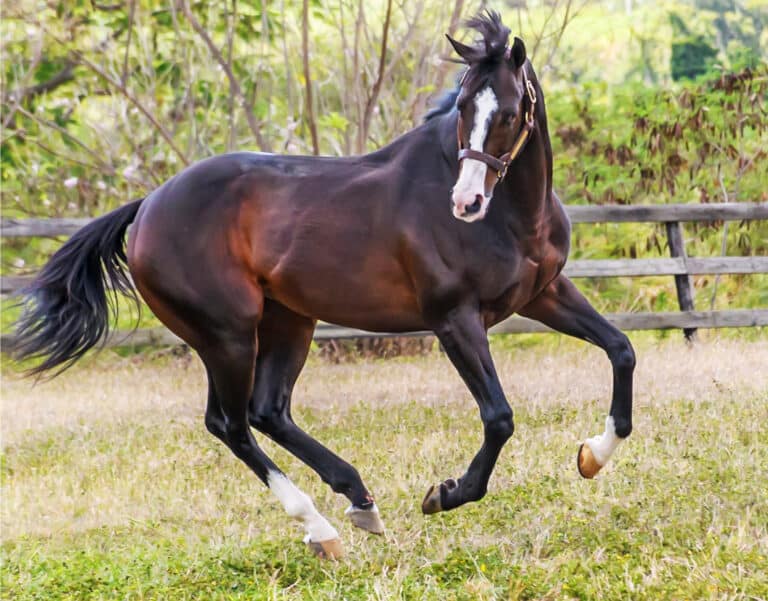
When a gelding is not a gelding
If you suspect your gelding may be a rig, seeking professional advice is a must. DR ELIZABETH BARTER explains why.
A rig or cryptorchid (a medical term literally meaning ‘hidden testicle’) is a male horse in which either one or both of his testicles have failed to descend into the scrotum. Visually, these horses may appear to be geldings, but their behaviour is more like that of a stallion.
Horses are sometimes known as a false rig or ‘cut proud’ if part of the epididymis (a portion of the testicle) has been left behind at castration. Rigs can be inherited and affected stallions may have decreased fertility, and are not able to be registered with some breed organisations.
The recommended approach is for rigs to be castrated, but because of the nature of the condition, the procedure is more complex to perform, often requiring the horse to travel to a surgical facility.
Cause
In the male equine foetus, the testicles form high up in the abdomen next to the kidneys. As the foetus develops, the testicles are pulled down towards the inguinal canal (a passage in the abdominal wall) by the gubernaculum (a band of tissue), and from there descend into the scrotum.
Most colts are born with two testicles in their scrotum. Sometimes however, it is not possible to feel the testicles until they are 18 months old. Once a horse is two years old, if the testes are not palpable (cannot be felt) then the horse is considered to be a rig or a true cryptorchid. If the testicle or testicles are undescended and do not reach the scrotum, they can be located anywhere from the inguinal canal all the way to the kidney. The failure of one testicle to descend is not uncommon, affecting approximately three to four per cent of male horses. Rigs more commonly occur in American Quarter Horses than in Thoroughbreds or in Arabians.

Inguinal retention
Inguinal retention, also referred to as ‘high flankers’, can occur in any horse. Temporary retention is more common in small ponies and the testicle may descend into the scrotum by the time the horse is two to three years old. Acupuncture and human chorionic gonadotrophin (hCG) have been used in humans to promote testicular descent, but according to the reports, success with these approaches in horses has been variable.
Abdominal retention
Abdominal retention will more commonly affect the left rather than the right testicle. An abdominal testicle often fails to develop normally because of the abnormal environment and increased temperature inside the abdomen compared to the scrotum. This can lead to a small, non-fertile, and abnormally shaped testicle. The abdominal testicle can also be very mobile within the abdomen making them difficult to remove surgically.
Diagnosis
One of the first things your vet may do if they can’t find both testicles is to sedate the horse to see if all or part of the testicle can be felt in the inguinal canal. If the testicle cannot be felt, an ultrasound may be used to look for the testicle or testicles from the groin all the way up to the abdomen
Testicles can be tricky to locate and require a good ultrasound and experienced veterinarian. It may be safest to perform this procedure at a hospital with a crush facility in case a rectal ultrasound is also required to achieve a diagnosis. Locating the testicle is important, as its position will change the surgical approach that is deemed appropriate.
There are several different blood tests that can be performed to look for testicular tissue, and which one is used will depend on the age of the horse. In older horses, a single blood sample is required. If the horse is less than two years old, two blood samples are needed. This approach also applies to donkeys.
The first sample is taken, then the horse is injected with human chorionic gonadotrophin hormone (hCG) to stimulate testosterone release. A second blood sample is taken 30 minutes to two hours later, and if testosterone levels are higher in the second sample, then the horse is likely to have some testicular tissue still present. Your veterinarian may still need to run multiple tests to increase the chances of making an accurate diagnosis.
Breeding
Cryptorchidism is inherited. This means that horses who are left as rigs are more likely to have colt foals who are rigs. Testicles retained in the abdomen at higher temperatures may be more likely to turn cancerous, although testicular cancer is rare in horses.
Additionally, horses with only one descended testicle (unilateral cryptorchids) have reduced fertility and are generally not able to service as many mares. Castration is highly recommended for horses older than three years who do not have both testicles descended into the scrotum.
Treatment
Declaring that a horse is a rig is often a condition of sale and can affect breed registration. Rigs can also present owners with the increased cost of castration. A thorough examination is recommended to determine if the horse is a rig and if so, to locate the position of the testicle.
If only one testicle is present it is important to leave it until the undescended testicle is located. Removing the testicle in the scrotum without first locating the undescended testicle is unethical, and must be disclosed to new owners if the horse is sold.
The surgery to remove the retained testicle is more involved than a normal castration especially if it is within the abdomen. Testicles within the abdomen can be removed either by abdominal surgery (laparotomy) or by keyhole surgery (laparoscopy).
If you think your horse is a rig it is important to contact your equine veterinarian to discuss the options and to discover what treatment choices might be involved.
Dr Elizabeth Barter is a senior veterinarian at Apiam Hunter Equine Centre in Scone NSW.



